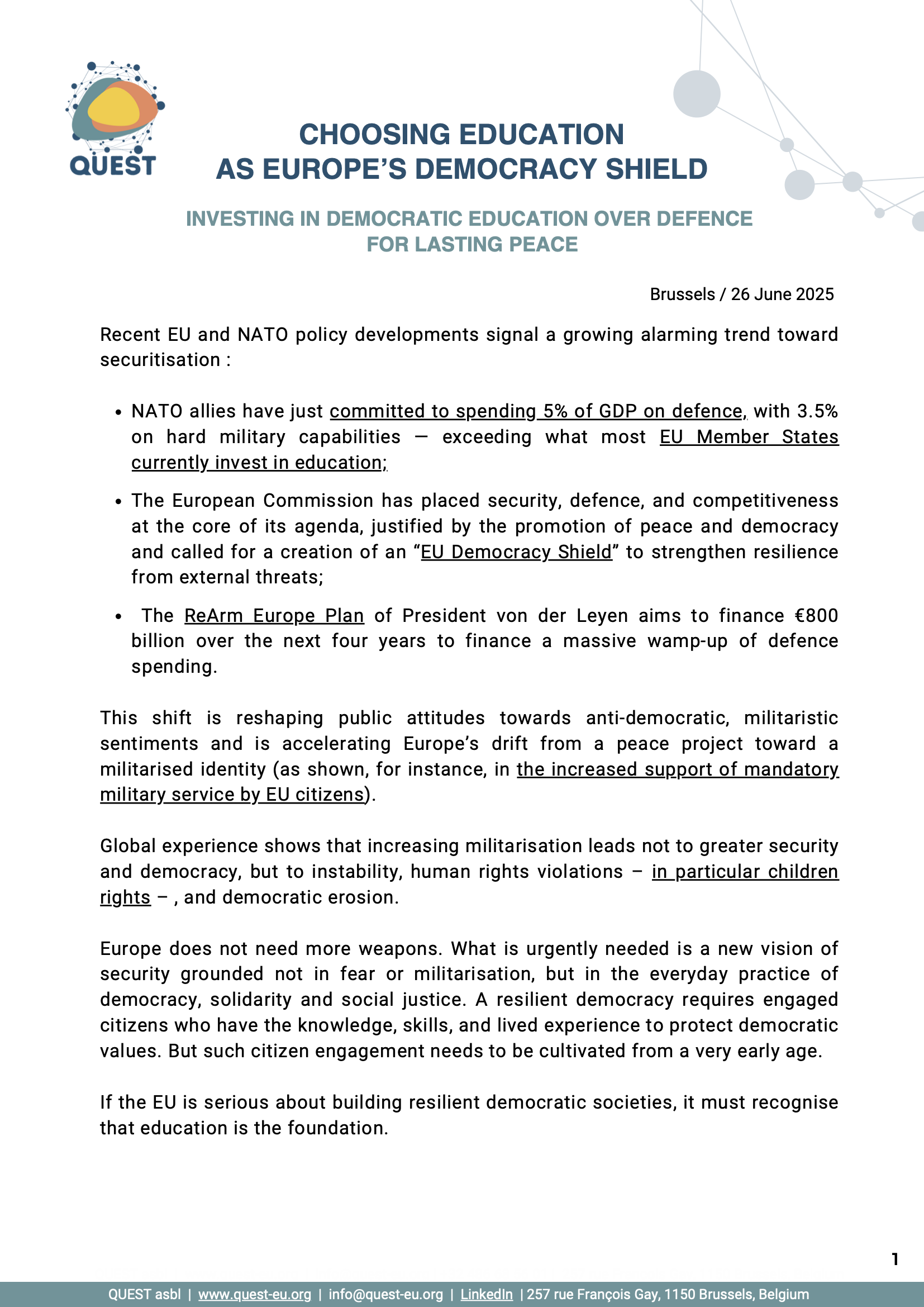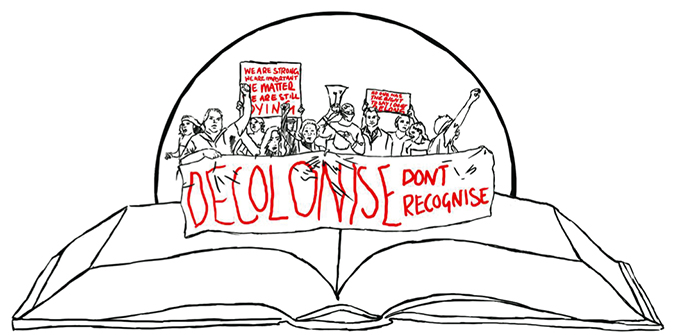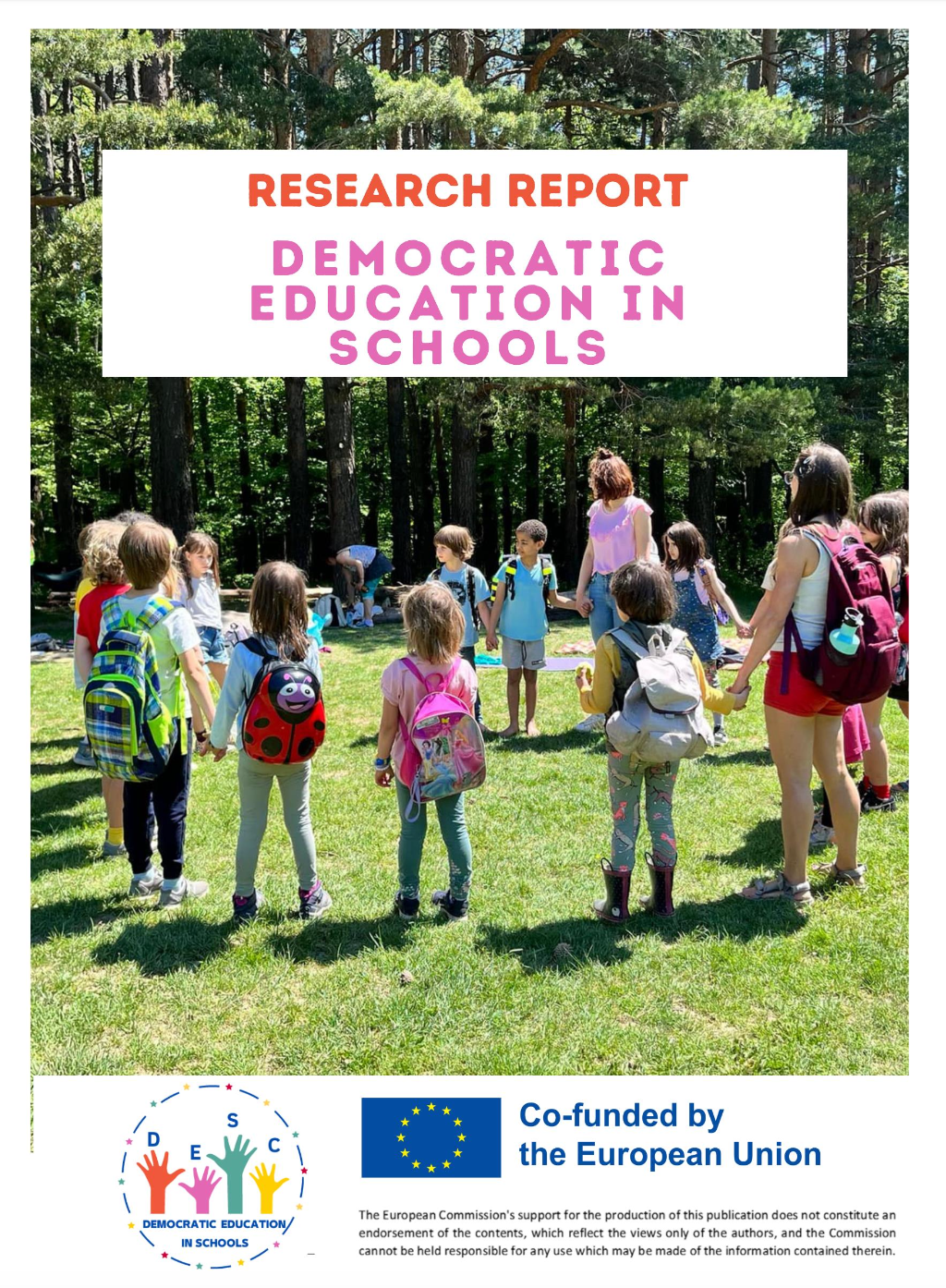Halfway towards the end of the European Education Area (EEA), policymakers, educators, and stakeholders from across the European Union gathered, on October 10, to assess the accomplishments, limits, and next steps to be taken to fulfill the objectives set for 2025. These results were also explained within QUEST’s expert panel discussion dedicated to the EEA.

The European Education Area (EEA) was born in 2021 in order to meet the need to create a common framework to improve and rethink education at the EU level. Its key goals include the improvement of mobility, cooperation, promoting the green and digital transition, and access to high-quality education and lifelong learning for all.
Since 2021, the EEA works along 5 key priorities, in order to reach the following 7 Eu-level targets :
- By 2030, at least 96% of children between 3 years old and the starting age for compulsory education should participate in early childhood education and care
- By 2030, less than 9% of early leavers from education and training
- By 2025, at least 60% of VET graduates benefit from work-based exposure during their vocational education and training
- By 2030, at least 45% of 25-34 years old with tertiary education attainment
- By 2025, 47% of 25-64 years old having received a training in the previous 12 months
- By 2030, less than 15% of low-achieving 15 years old in reading, mathematics and science
- By 2030, less than 15% of low-achieving eighth-graders in computer and information literacy
Limits and achievements of the EEA
As part of the objectives set for 2025, the European Union has already adopted 8 out of the 14 EU-level strategic initiatives that it had committed to pass at the start of the EEA. These strategic initiatives seek to influence and guide member states’ consideration of education at the national level. These 8 strategic initiatives are for instance promoting learning for the green transition and sustainability, inclusion and well-being at school, learning mobility and higher diploma recognition in the EU. To name a few, we could cite the 2022 Council Recommendation Pathway to School Success and the Blended learning approaches for high quality and inclusive primary and secondary education.
While significant progress can be noted in regards to achieving the 7 EU-level targets, additional efforts still need to be taken. We notably see an increased gender gap in higher education and disparities among EU member states’ implementation of the EEA.Socio-economic background still greatly affects educational outcomes in the EU with, for instance, young people from disadvantaged socio-economic backgrounds being almost six times more likely to underachieve at age 15. On the other hand, only 31,3% of women are enrolled in STEM, while men are underrepresented in the fields of education (21,5%), health and welfare (28.1%), arts and humanities (35.5%), and social sciences, journalism and information (35.6%).
Furthermore, additional efforts need to be taken to further the adoption of digital skills (no member state has reached the target of at least 80% of 16-74 year olds reporting basic digital skills), and the transversal inclusion of learning for sustainability in curriculums and education practices.
Citizenship education : a central topic to be strengthened
Citizenship education was also highlighted as a key subject to be deepened in the EU. Indeed, citizenship education helps to “engage and encourage participation of young people in society and democratic processes”, as expressed by the Chair of the Committee on Culture and Education in the EP, Sabine Verheyen. However, many challenges still lay ahead, including : a lack of funding and resources (training, space in the curriculum, relevant teaching materials), Confusion and controversy over the definition of “citizenship education” and what it entails in terms of teaching, a lack of innovative, inclusive, critical, and cross-curricular approaches when teaching citizenship education , and the need for increased multifaceted assessments.
Many of these challenges were addressed by the recent issue paper on citizenship education published by the European Commission’s Working Group on Equality and Values in education and training. Indeed, the paper provides an outlook of different types of citizenship education in EU countries, and summarises the most relevant initiatives. Its recommendations are in line with some of the statements made at the EEA mid-term review event, namely the need to consider citizenship education in a whole school approach, meaning : to embody it in the school processes and physical environment rather than solely teaching it. This arguably calls for a rethinking of learning formats, and the replication of democratic systems within schools, enabling active and critical participation by children and young people in the decisions that affect them.
Together with other improvements underlined by the EEA – such as teacher shortages and emotional well-being and motivation – the need to support the development of innovative pedagogies that recognise children’s agency will probably be an important conversation to take further in future gatherings of the EEA, as it is the best way to ensure long-term improvements in the participation of youth in European societies. The promotion of democratic education within the EU, as advocated by QUEST, could benefit from this renewed attention on citizenship education.



